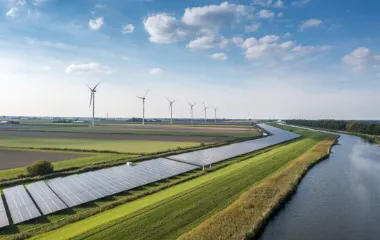Financed emissions, the greenhouse gas emissions associated with a financial institution’s lending and investment activities, are gaining significant attention. As climate change problems escalate, regulators and stakeholders are demanding transparency from financial institutions regarding their role in emissions. While some regions have established mandatory disclosure requirements, others still rely on voluntary frameworks. The EU’s sustainable finance framework aims to reduce greenhouse gas emissions by 55% by 2030, compared to 1990 levels.
Navigating Regulatory Requirements
EU Mandates and Frameworks
The EU has established regulations mandating financed emissions disclosure, pushing institutions to adopt standardized reporting methodologies. The Partnership for Carbon Accounting Financials (PCAF) offers guidelines for precise calculation.
US Voluntary Disclosures
The US mainly relies on voluntary disclosures, but there are signals of stricter climate risk disclosure expectations from regulators.
Proactive Adaptation
Financial institutions should invest in data and reporting systems that align with current and future regulations. Engaging with standard-setting bodies enhances credibility. Proactive adaptation is key for maintaining competitiveness.
EU Emissions Trading System (ETS)
The EU Emissions Trading System (EU ETS) operates on a "cap and trade" principle, limiting the total amount of greenhouse gases that can be emitted. By 2023, the EU ETS helped lower emissions from European power and industry plants by approximately 47% compared to 2005 levels.
Sustainable Finance Disclosure Regulation (SFDR)
The Sustainable Finance Disclosure Regulation (SFDR) requires financial market participants to disclose how they integrate sustainability risks into their investment decisions. Larger firms must publish detailed reports, while smaller firms have flexibility. SFDR complements regulations like the Corporate Sustainability Reporting Directive (CSRD) and EU Taxonomy.
EU Climate Monitoring Mechanism
All EU countries are required to monitor their emissions under the EU's Climate Monitoring Mechanism, which sets the EU's own internal reporting rules.
Innovation in Reporting and Analysis
As the demand for transparency around financed emissions grows, innovative reporting practices are emerging within the financial sector. Financial institutions are leveraging advanced data analytics and technology to enhance their emissions reporting frameworks. These innovations include the integration of artificial intelligence (AI) and machine learning algorithms to analyze vast datasets, enabling more accurate assessments of financed emissions across portfolios.
Moreover, collaboration among financial institutions is fostering the development of standardized reporting methodologies that enhance comparability and reliability. Initiatives like PCAF provide a framework that encourages consistency in how emissions are calculated and reported, allowing stakeholders to make informed decisions based on comparable data.
Additionally, many firms are exploring the use of blockchain technology to improve transparency in their financing activities. By creating immutable records of transactions linked to specific projects or companies, blockchain can help track emissions more accurately and ensure accountability.
These innovations not only streamline reporting processes but also empower financial institutions to engage more effectively with clients and stakeholders about their climate impact. By adopting cutting-edge technologies and collaborative approaches, firms can enhance their credibility while driving meaningful change in the transition to a low-carbon economy.
Process to Reduce Financed Emissions
To effectively reduce financed emissions, financial institutions must adopt a multi-faceted approach that encompasses several key strategies:
Setting Clear Targets
Establishing science-based targets for reducing financed emissions is crucial for guiding institutional efforts and measuring progress.
Engaging Clients
Financial firms should actively engage with clients to encourage them to adopt sustainable practices and improve their own emissions profiles.
Investment in Green Projects
Allocating capital towards renewable energy projects and sustainable initiatives can significantly lower overall financed emissions.
Risk Assessment
Implementing robust environmental risk assessments during the lending process helps identify high-emission projects that may pose long-term risks.
Collaboration with Industry Peers
Partnering with other financial institutions can drive collective action towards reducing financed emissions through shared knowledge and resources.
Continuous Monitoring
Regularly monitoring and updating financed emissions calculations ensures that institutions remain accountable and responsive to changing circumstances.
By implementing these strategies, financial institutions can play a pivotal role in mitigating climate change while enhancing their reputational standing within the market.
How Banks Will Play a Role
Banks are poised to play a critical role in reducing financed emissions through their influence on capital allocation decisions. By prioritizing investments in sustainable projects and companies committed to lowering their carbon footprints, banks can drive significant change within industries reliant on financing.
Furthermore, banks can leverage their position as trusted advisors to guide clients toward more sustainable practices. This includes offering tailored financial products that incentivize lower emissions or supporting clients in transitioning towards greener operations.
Additionally, banks must engage actively with regulators and industry coalitions to shape policies that promote transparency around financed emissions. By advocating for clear standards and best practices, banks can help create an environment conducive to sustainable finance while ensuring compliance with evolving regulations.
Ultimately, banks have both an opportunity and responsibility to lead the charge towards a low-carbon economy by embedding sustainability into their core business strategies.
Conclusion
The landscape of financed emission disclosure is rapidly evolving as financial institutions navigate regulatory pressures and stakeholder expectations. By embracing innovation in reporting practices, setting ambitious reduction targets, and actively engaging clients, banks can significantly impact global efforts to combat climate change. As we move forward, it is imperative for financial entities to recognize their pivotal role in shaping a sustainable future through responsible financing practices.
Recent Posts






